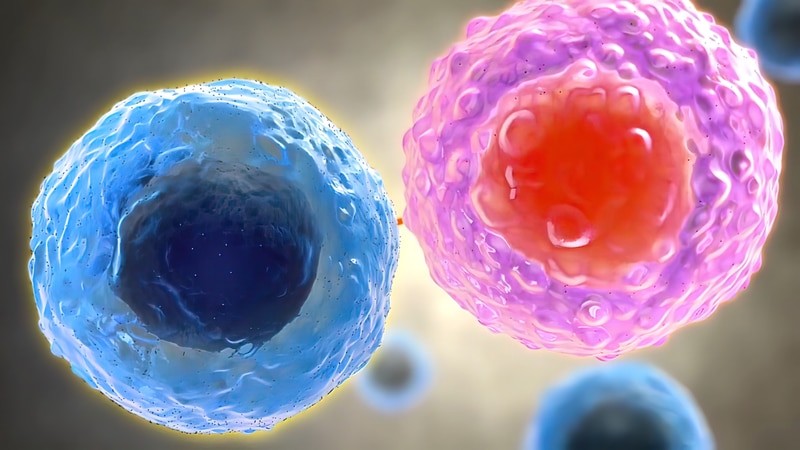HGNC ID: 11917
Target Abstract:
Tumor necrosis factor Receptor II (TNF RII) is also known as tumor necrosis factor receptor superfamily member 1B (TNFRSF1B). This protein forms a heterogenic complex with TNF RI that mediates the recruitment of two anti-apoptotic proteins c-IAP1 and c-IAP2 with E3 ubiquitin ligase activity. The function of IAPs in TNF receptor signaling is unknown, however c-IAP1 is thought to enhance TNF induced apoptosis by ubiquitinating and degrading TNF receptor-associated factor 2 (TRAF2), which mediates anti-apoptotic signaling. Gene knockout experiments in mice have shown that the protein plays a role in protecting neurons from apoptosis by stimulating antioxidant pathways.
TNFRSF1B Target Infomation Overview
- Target Symbol: TNFRSF1B, TNF receptor superfamily member 1B
- Gene Groups: CD molecules; Tumor necrosis factor receptor superfamily; MicroRNA protein coding host genes
- Alias: TNFBR; TNFR80; TNF-R75; TNF-R-II; p75; CD120b
- Previous Names: TNFR2
- Alias Names: tumor necrosis factor receptor superfamily, member 1B
TNFRSF1B, TNF receptor superfamily member 1B Target Infomation by Species
- Human
- Mouse
- Rat
Human TNFRSF1B Target Information
- Target Symbol: TNFRSF1B, TNF receptor superfamily member 1B
- Alias:
- CD120b
- p75
- p75 TNF receptor
- p75TNFR
- p80 TNF-alpha receptor
- soluble TNFR1B variant 1
- TBPII
- TNF-R-II
- TNF-R2
- TNF-R75
- TNF-RII
- TNFBR
- TNFR-II
- TNFR1B
- TNFR2
- TNFR80
- tumor necrosis factor beta receptor
- tumor necrosis factor binding protein 2
- tumor necrosis factor receptor 2
- tumor necrosis factor receptor superfamily member 1B
- tumor necrosis factor receptor superfamily, member 1B
- tumor necrosis factor receptor type II
- NCBI_Gene: 7133
- UniProtKB: P20333
Human TNFRSF1B Predicted Functions
Enables tumor necrosis factor binding activity and ubiquitin protein ligase binding activity. Involved in cellular response to lipopolysaccharide and positive regulation of membrane protein ectodomain proteolysis. Located in membrane raft. Implicated in several diseases, including Parkinsonism; acne; bone disease (multiple); glomerulonephritis (multiple); and lung disease (multiple). Biomarker of several diseases, including autoimmune disease of musculoskeletal system (multiple); female reproductive organ cancer (multiple); glomerulonephritis (multiple); kidney failure (multiple); and lung disease (multiple).
Mouse Tnfrsf1b Target Information
- Target Symbol: Tnfrsf1b, tumor necrosis factor receptor superfamily, member 1b
- Alias:
- CD120b
- p75
- p75 TNFR
- TNF-alphaR2
- TNF-R-II
- TNF-R2
- TNF-R75
- TNFalpha-R2
- TNFBR
- Tnfr-1
- Tnfr2
- TNFR80
- TNFRII
- tumor necrosis factor receptor 1
- tumor necrosis factor receptor 2
- NCBI_Gene: 21938
Mouse Tnfrsf1b Predicted Functions
Enables tumor necrosis factor-activated receptor activity. Involved in several processes, including negative regulation of extracellular matrix constituent secretion; regulation of nervous system development; and semi-lunar valve development. Acts upstream of or within several processes, including RNA destabilization; apoptotic signaling pathway; and negative regulation of inflammatory response. Located in membrane raft. Is expressed in several structures, including blood; dorsal aorta; extraembryonic component; genitourinary system; and liver. Human ortholog(s) of this gene implicated in several diseases, including Parkinsonism; acne; bone disease (multiple); glomerulonephritis (multiple); and lung disease (multiple). Orthologous to human TNFRSF1B (TNF receptor superfamily member 1B).
Rat Tnfrsf1b Target Information
- Target Symbol: Tnfrsf1b, TNF receptor superfamily member 1B
- Alias:
- p75
- p80 TNF-alpha receptor
- TNF-R2
- TNF-RII
- TNFR-II
- Tnfr2
- tumor necrosis factor receptor 2
- tumor necrosis factor receptor superfamily member 1B
- tumor necrosis factor receptor superfamily, member 1b
- tumor necrosis factor receptor type II
- NCBI_Gene: 156767
- UniProtKB: Q80WY6
Rat Tnfrsf1b Predicted Functions
Enables tumor necrosis factor-activated receptor activity. Involved in several processes, including cellular response to growth factor stimulus; cellular response to tumor necrosis factor; and response to lipopolysaccharide. Located in several cellular components, including neuronal cell body; perinuclear region of cytoplasm; and varicosity. Used to study visual epilepsy. Biomarker of Crohn’s disease; myocardial infarction; sciatic neuropathy; and ureteral obstruction. Human ortholog(s) of this gene implicated in several diseases, including Parkinsonism; acne; bone disease (multiple); glomerulonephritis (multiple); and lung disease (multiple). Orthologous to human TNFRSF1B (TNF receptor superfamily member 1B).


